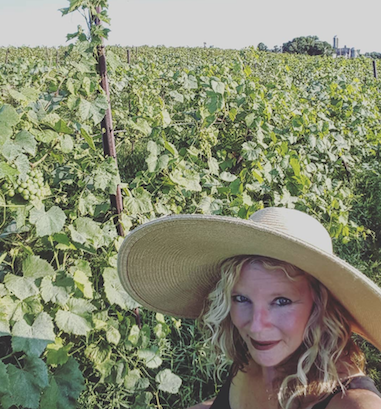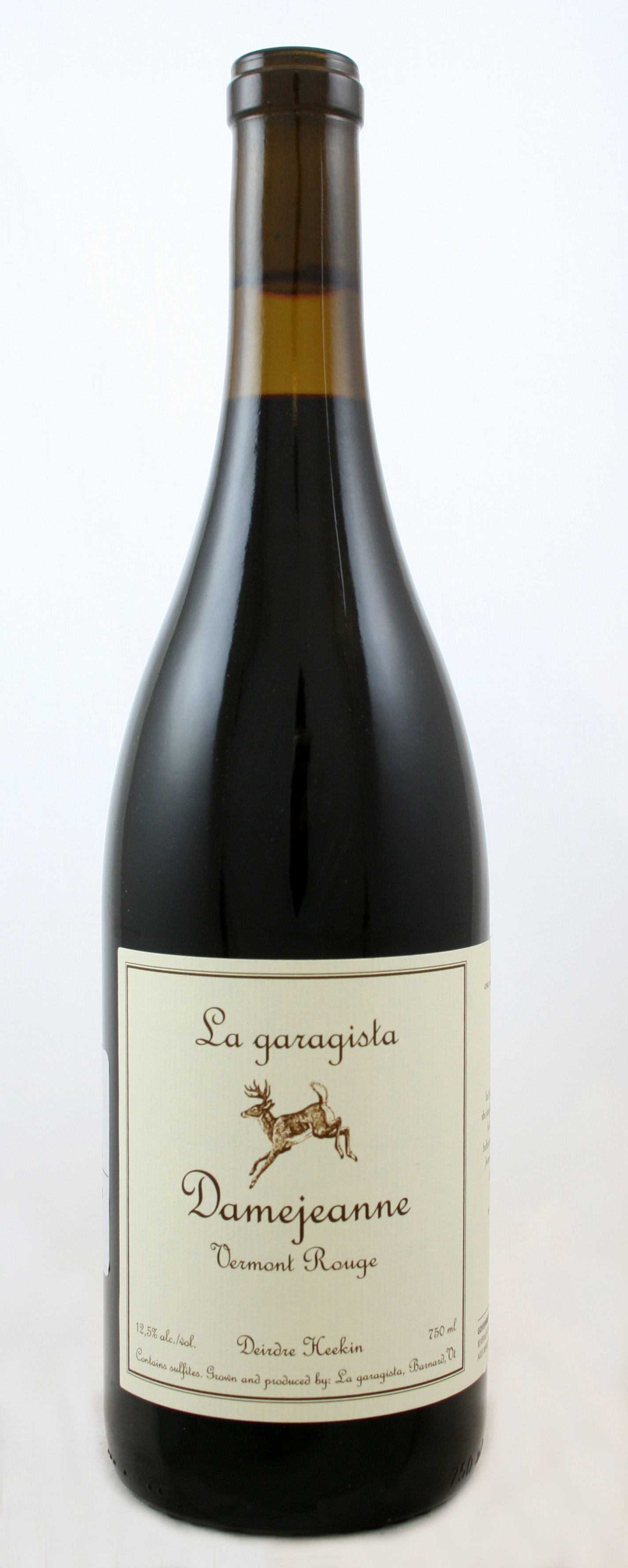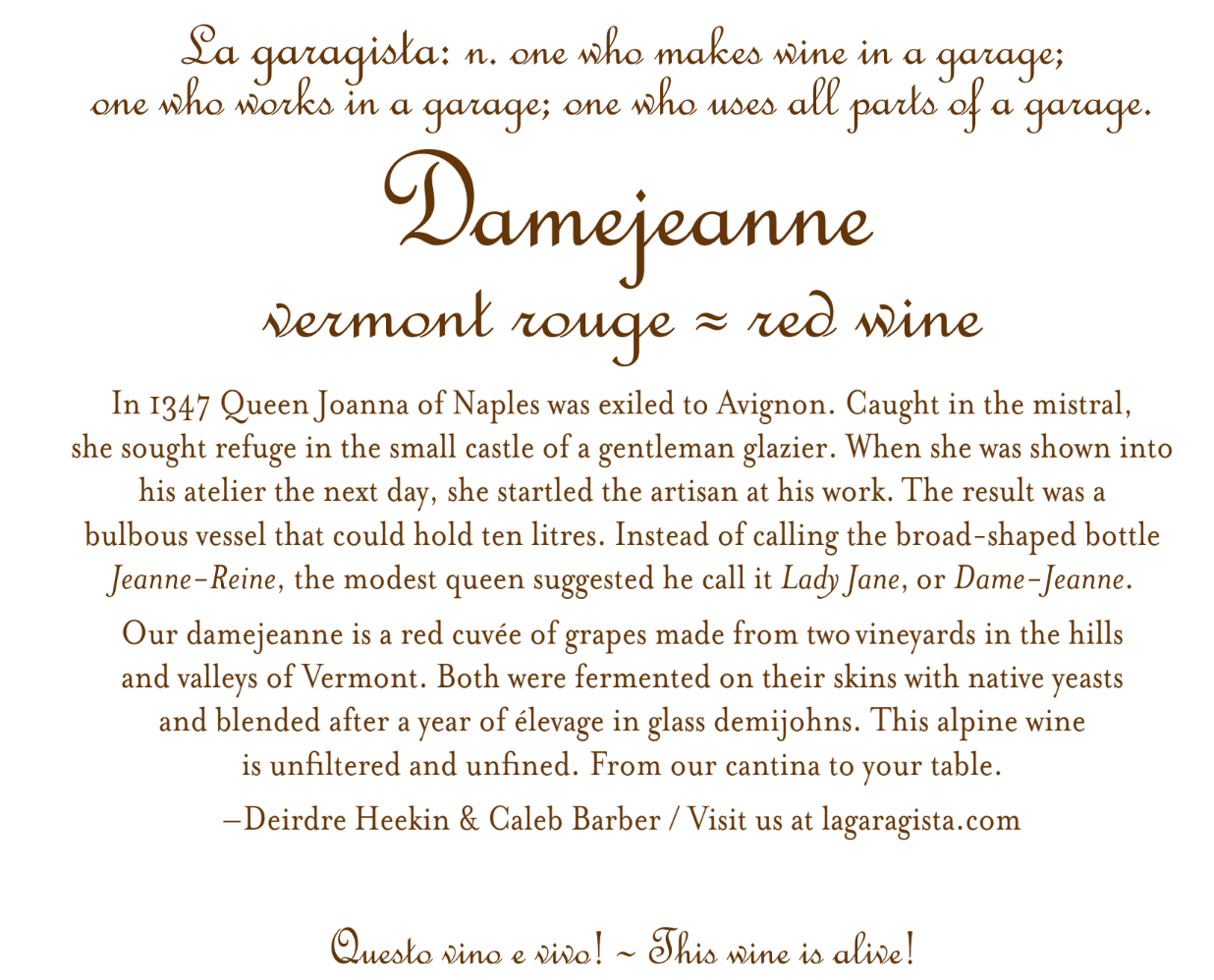
The project known as La Garagista Farm + Winery began in 2010. In essence, Deirdre and Caleb farm three parcels of co-planted, alpine varietals that are horticultural crosses of vinifera and native riparia and labrusca vines. The family trees of these varietals are quite baroque and uniquely American.
They practice biodynamics and also pull from diverse organic and permaculture concepts. Primarily, there is the home farm and vineyard in the Chateauguay, a protected forest in Barnard, Vermont (1600 feet) where they also grow vegetables and fruit and raise some livestock for their restaurant Osteria Pane e Salute (which has now become a cellar door/winery table). The farm is a polycultural project with vegetables, orchards, flower gardens, vines, and chickens all interplanted. The chickens are particularly interplanted. They also raise pigs on farm, utilizing them to naturally till new ground and to be the source of their farm-cured charcuterie. In the vineyard, they plant vegetables between the vines focusing on root vegetables, escaroles and chicories, and flowers, all of which enrich the vitality of the soils in this parcel.
The two other parcels are in the Champlain Valley (184/194 feet) and are close to Lake Champlain. No-till and natural field cover crops are part of the farming at these two vineyards, encouraging the flora and fauna particular to each microclimate.

The vineyard for the Damejeanne is in Vergennes in the Champlain valley, located in a broad, open field five miles from Lake Champlain, west facing slope. Full sun. It is farmed no-till, and biodynamically, with a focus on natural field cover and soil development. They use typical biodynamic preps of horn manure, silica, horsetail, stinging nettle, kaolin clay, and small amounts of minerals copper and sulphur due to intense humidity. They also experiment with plant medicines provided by the vineyard floor when needed.
The grapes were harvested manually, destemmed into small open top fermenters, foot-crushed and fermented on skins for about five weeks before basket pressing. The process is natural, with indigenous yeasts and ambient and nothing added. The wine is then matured in glass demijohns of 25 litre capacity where they do a natural malolactic in the spring. They use glass demijohns because glass is a neutral material and they feel the wine is influenced more by shape than material. No filtration or fining before bottling and only a tiny dose of sulphur.

Damejeanne is 90% Marquette (descendent from Pinot Noir), 10% La Crescent (descendent from Muscat d’Ambourg). Yields are tiny. The wine takes its name from the glass demijohns in which it is fermented and aged. The wine is pale with rasping sour-cherry freshness of a youthful Barbera or a Freisa perhaps. The liquid is ebulliently purple, youthful and impertinent, a joyous surprise.
2018 Damejeanne, La Garigista
*
Interested in finding out more about the La Garagista’s Damejeanne? Contact us directly:
shop@lescaves.co.uk | sales@lescaves.co.uk | 01483 538820

